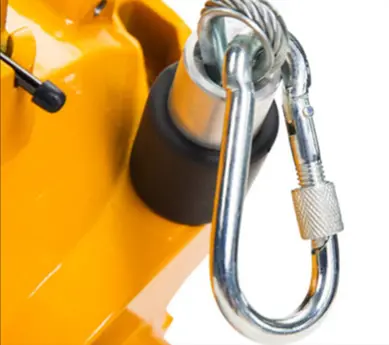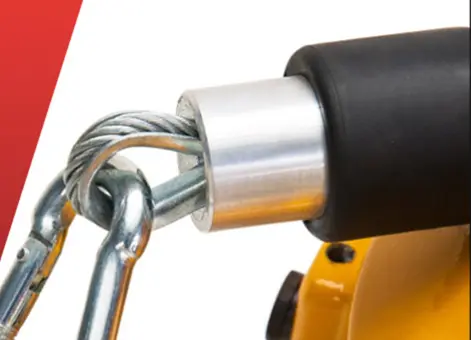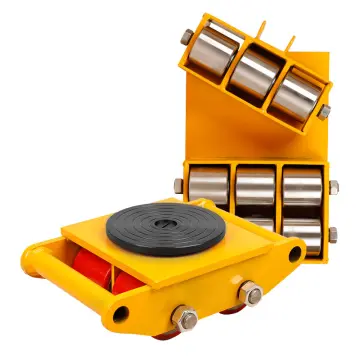0102030405
Self-Lifting Crane 1-3kg
Working Principle
The working principle of a spring balancer is based on the principles of elasticity and balance, achieving object balance through the elastic properties of the spring. Spring balancers use the elasticity of springs to balance the weight of suspended objects. When a suspended object is subjected to external force or gravity, the spring will undergo elastic deformation and generate restoring force. The magnitude of the restoring force is directly proportional to the elastic coefficient and deformation of the spring. When a suspended object is subjected to external force and descends, the spring will contract, generating an upward restoring force to balance the weight of the suspended object. The application scenarios of spring balancers include factory assembly lines, automotive molds, component welding, electronic equipment suspension, and various other occasions. In factory assembly lines, spring balancers are commonly used to suspend heavy objects such as welding guns, making it easy for workers to operate, reducing physical exertion, and improving work efficiency. The method of using a spring balancer includes selecting the appropriate specifications, connecting safety ropes, adjusting the balance weight of the balancer, and paying attention to safety operation steps during use, such as locking the tower wheel before removing tools.
The advantages and disadvantages of spring balancers include:
Advantages: It significantly reduces the labor intensity of operators, improves work efficiency, and is suitable for high-intensity and high-frequency work environments.
Disadvantage: It is necessary to regularly inspect and maintain the condition of the spring to ensure that it will not break or deform under high-intensity use.
By introducing these principles and application scenarios, we can better understand the important role of spring balancers in various industrial and commercial environments.
Scope of Use
A spring balancer is a device that can maintain a relatively balanced state of mechanical assemblies, mainly composed of springs, shells, and pulleys. Its main function is to maintain a relatively stable state between the center of gravity and the hanging point of the lifting tool under a certain gravity. By adjusting the hanging angle and tension, the lifting tool can maintain a balanced state, thereby reducing the labor intensity of workers and improving work efficiency and safety.
Application Area
Machine tool processing: During the machining process of lathes, milling machines, drilling machines, grinders, etc., spring balancers can maintain the balance of the workpiece and reduce the labor intensity of workers.
Industrial production line: Used for material handling, installation, and adjustment on the production line, helping workers complete their work more easily.
Logistics handling: widely used in the field of logistics handling, it has the characteristics of simple operation, strong load capacity and safety and reliability.
Medical equipment: used to support medical devices such as surgical lights and catheter stents, reducing the burden on doctors.
Automobile manufacturing: In automotive engineering, spring balancers (also known as balance bars) enhance the rigidity of the vehicle body by connecting front shock absorbers, preventing deformation and torque imbalance between the two wheels, and improving driving safety and comfort.
Product Attributes
Self-lifting crane or spring balancer
Model: 1-3Kg, 3-5Kg, 5-9Kg, 9-15Kg, 15-22Kg, 22-30Kg, 30-40Kg, 40-50Kg, 50-60Kg, 60-70Kg, 70-80Kg
Customized processing: Yes
Material: Aluminum alloy
Load bearing: 9-15Kg
Scope of application: Pipeline operations
Surface: Spray painted
Lightweight and labor-saving
Quenched gears

Guaranty the Quality

Technical Parameters
Model |
Load (Kg) |
Working stroke(m) |
Weight (Kg) |
HW-3 |
1-3 |
1.9 |
1.6 |
HW-5 |
3-5 |
1.9 |
1.62 |
HW-9 |
5-9 |
1.8 |
4.2 |
HW-15 |
9-15 |
1.8 |
4.5 |
HW-22 |
15-22 |
1.5 |
8 |
HW-30 |
22-30 |
1.5 |
8.5 |
HW-40 |
30-40 |
1.5 |
10 |
HW-50 |
40-50 |
1.5 |
10.2 |
HW-60 |
50-60 |
1.5 |
10.8 |
HW-70 |
60-70 |
1.5 |
11.2 |
HW-80 |
70-80 |
1.5 |
12 |
HW-100 |
80-100 |
1.7 |
22 |
HW-120 |
100-120 |
1.7 |
23 |
HW-140 |
120-140 |
1.7 |
24 |
HW-160 |
140-160 |
1.7 |
24.5 |
HW-180 |
160-180 |
1.7 |
25 |
HW-200 |
180-200 |
1.7 |
25.5 |
HW-120/240 |
200-240 |
1.7 |
50 |
HW-140/280 |
240-280 |
1.7 |
52 |
HW-160/320 |
280-320 |
1.7 |
54 |
Product Details

Alloy steel casing
Adopting thickened alloy steel casing to reduce the weight of the aircraft and improve wear resistance is effective.
Aluminum Alloy Tower Wheel
High precision manufacturing operations are more flexible.


Alloy Steel Hook
Alloy steel forged hook with safety card for peace of mind and ease of use.
Safety Buckle
High strength lockable safety buckle is securely fastened and guaranteed.


Anti-collision design
Extended and thickened cushioning rubber sleeve prolongs service life.
Pictures









